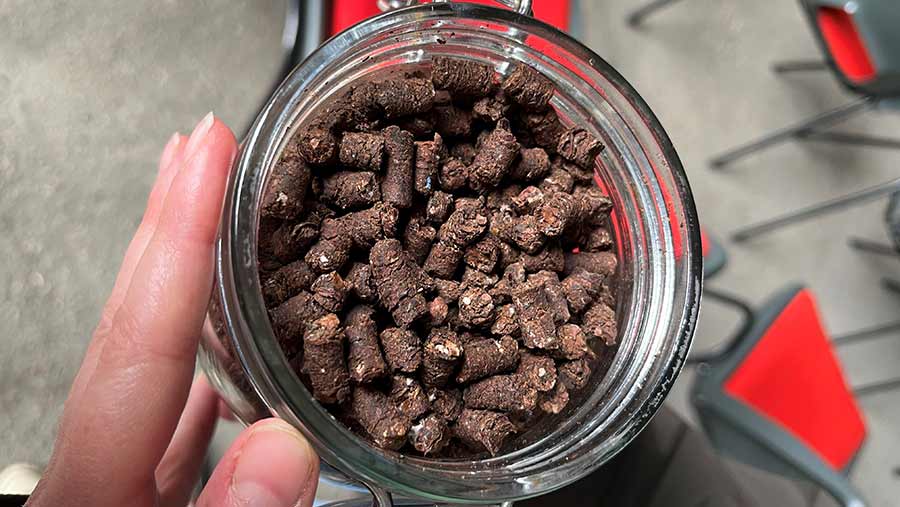Norfolk grower tests chocolate waste fertiliser in wheat
 The York plant can produce about 7,000t a year of the slow-release fertiliser © Louise Impey
The York plant can produce about 7,000t a year of the slow-release fertiliser © Louise Impey Fertiliser made from cocoa shell waste produced by the Nestlé confectionery factory in York is being trialled by the AHDB’s Diss Monitor Farm host Richard Ling in winter wheat.
Use of the slow-release product, which comes in pellet form, will allow him to grow low-carbon wheat for the food giant’s pet food plant in Sudbury, Suffolk, producing it without using any artificial nitrogen.
See also: What’s in Your Fertiliser Shed? Grower favours solid nitrogen for milling wheats
The chocolate waste fertiliser contains 10% nitrogen and Richard is using it on a field scale, testing out two application rates, full and half rate, as he works with Nestlé to lower the carbon emissions throughout the supply chain.
The fertiliser should also add organic matter to the soil, helping to improve soil function – something that Richard has been concentrating on since launching a phased move to direct drilling and a plan to develop a sustainable, resilient business.
At the same time, small plot trials with the novel fertiliser are taking place at Rookery Farm to get a better understanding of the optimum application timings, the nitrogen release rate and the response of the crop.
Once analysed, that information could help to refine the use of the fertiliser.
“As it’s a 10% nitrogen product, we needed lots of it,” comments Richard. “Our normal practice is to apply 200kg/ha of soil-applied nitrogen in three splits, with the first application going on early.”
The 7t of cocoa shell fertiliser – which came in bags – was applied towards the end of March, some three weeks later than Richard would normally apply the first dose.
“It all went on in one go,” he recalls. “We tried putting it on with the farm fertiliser spreader, but that didn’t work.
“So we had to use a contractor with a belt spreader. He managed to spread it to 18m, although we usually work on 36m tramlines here.”
Once applied, the pellets break down, releasing nitrogen over time. “The crop seemed to be getting the nutrients it needed, so we are looking forward to seeing how it yields.”
The York factory, Nestlé’s main confectionery production site in the UK, can produce 7,000t/year of the fertiliser. “It’s making good use of a waste product and it allows Nestlé to support farmers with a low-carbon fertiliser, which can be used to grow a low carbon wheat,” says Richard.
The fertiliser comes with a faint cocoa aroma, he confirms.

